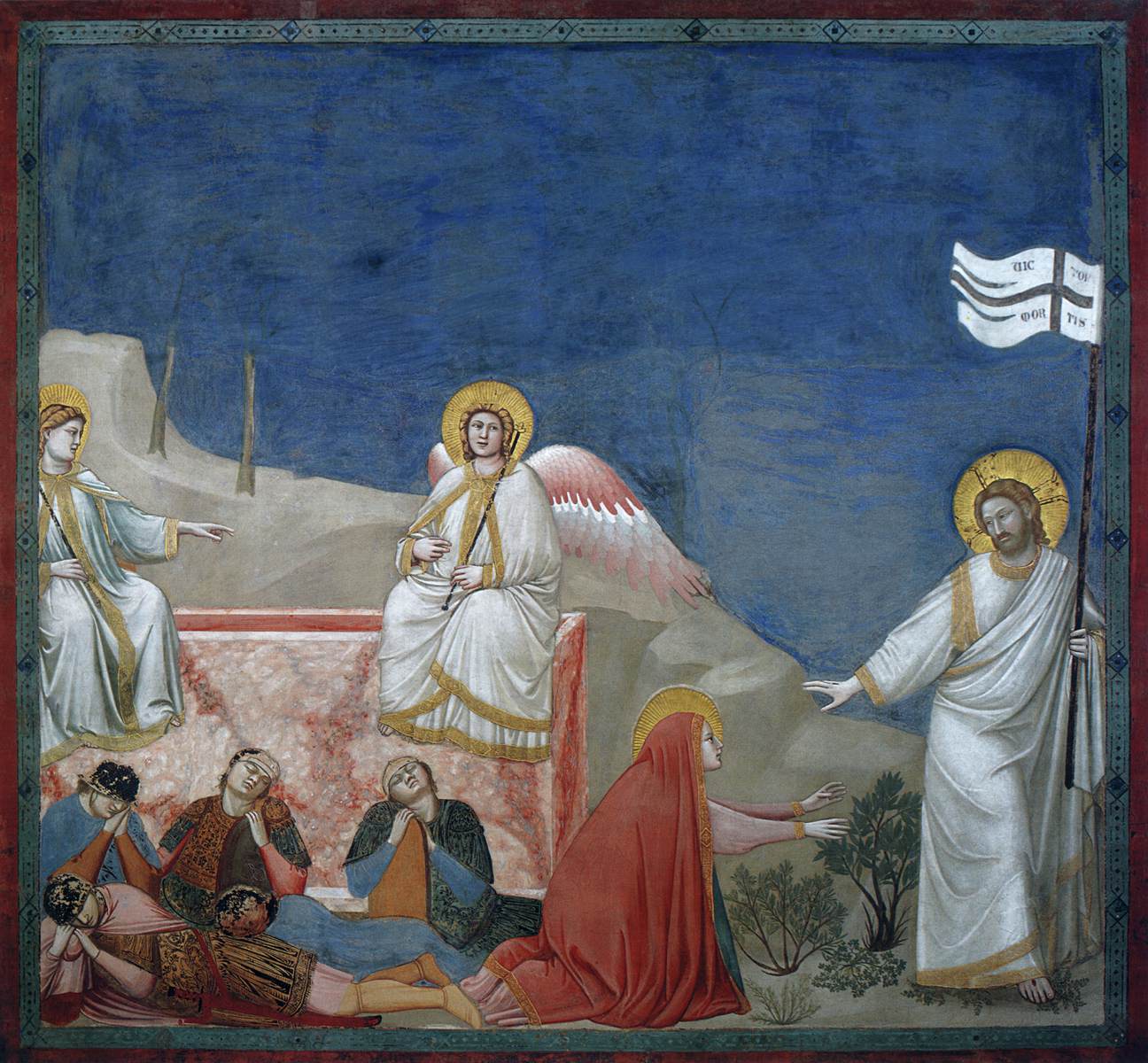
Giotto. Noli me tangere (début 14e siècle)
Original Title: Noli me tangere Date: c.1304 - c. 1306 Style: Proto Renaissance Series: Scenes from the Life of Christ Genre: religious painting Media: fresco Location: Scrovegni (Arena) Chapel, Padua, Italy Dimensions: 200 x 185 cm Order Oil Painting reproduction Tags: Christianity Jesus-Christ Textile Giotto Famous works
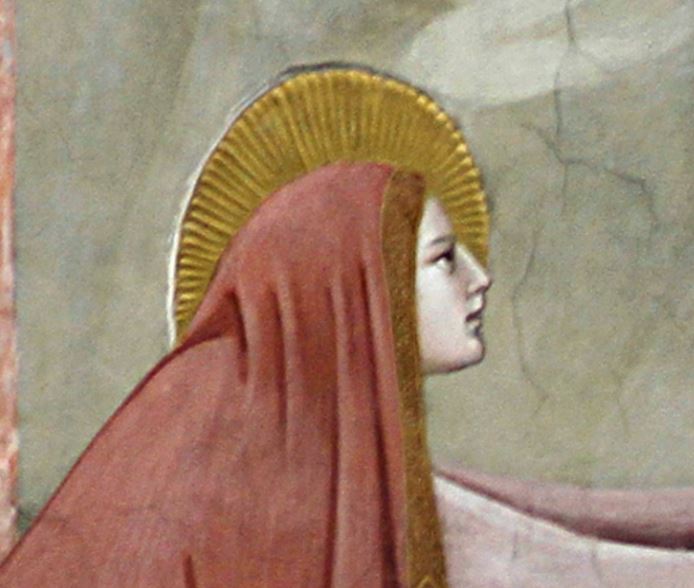
Giotto. Noli me tangere (début 14e siècle)
The authenticity and the dating of the frescoes in the Magdalen Chapel of the Lower Church of San Francesco is debated. It is generally agreed that they were executed with a contribution of Giotto but his role was probably that of planner rather than painter. There emerges the personality of one, or perhaps two of his assistants - the so-called.
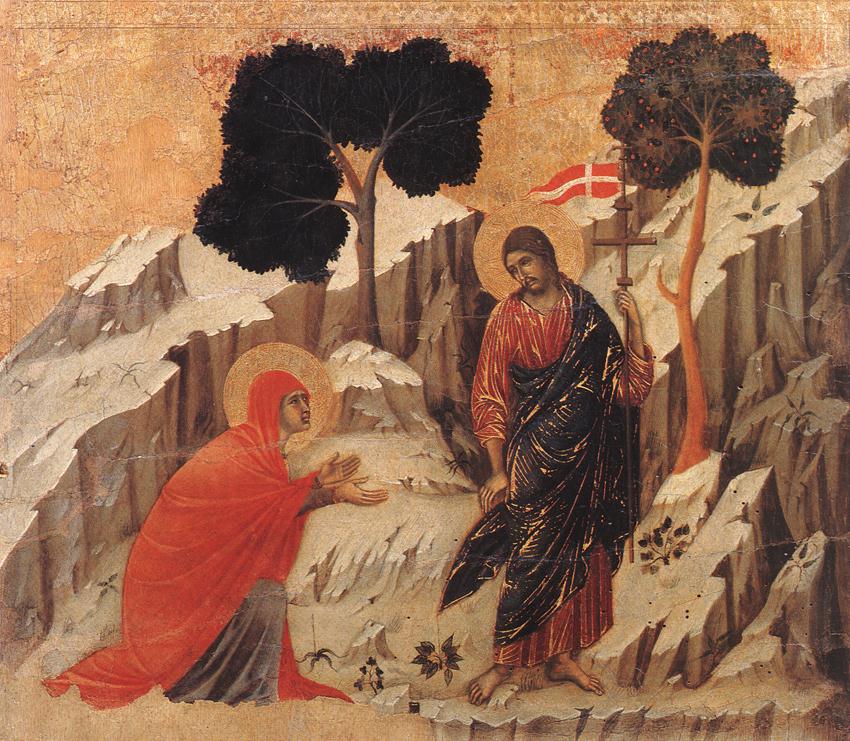
Giotto. Noli me tangere (début 14e siècle)
Noli me tangere (1304-06) In this interpretation of Christ's resurrection, Giotto conflates two separate events—Christ's resurrection and his subsequent meeting with Mary Magdalene. To the left of the picture an angel sits on a tomb and assumes the role of witness to the resurrection.
.jpg)
Noli me Tangere, c.1305 Giotto di Bondone
Giotto, Noli Me Tangere. from Arena Chapel. Italian, 1304-1306. Padua, Arena./Scrovegni Chapel. Duccio, Noli Me Tangere. from Maesta Altarpiece. Italian, 1308-1311. Siena, Museo dell'Opera del Duomo. Clearly, the overall iconography is being set in these early images. Since all Western languages are read from left to right this is the direction.
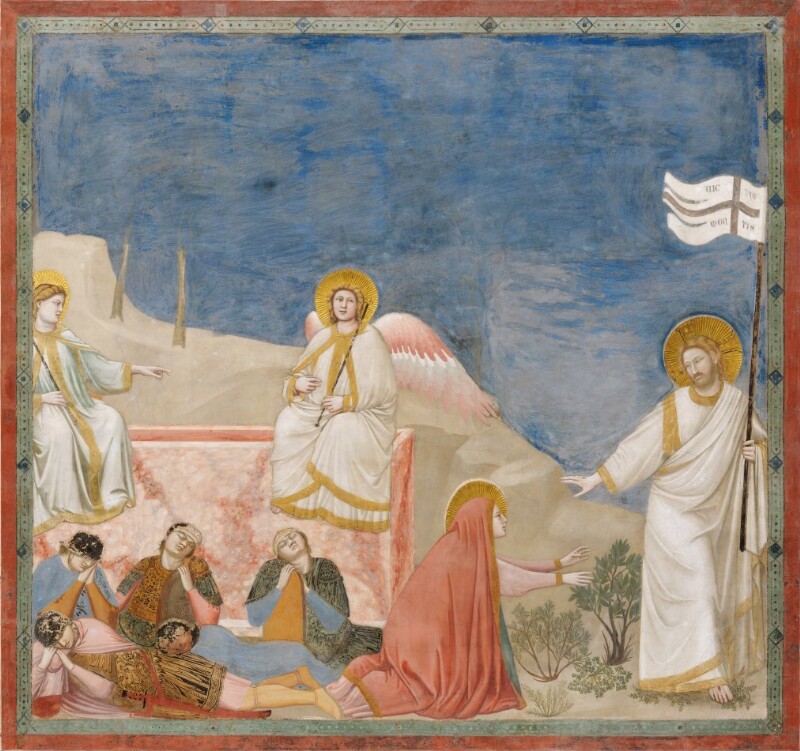
Noli me tangere Giotto (Giotto Di Bondone) Haltadefinizione
In the lower tier on the left wall are the Road to Calvary, the Crucifixion, the Lamentation, the Resurrection (represented by the Noli me tangere scene instead of the three Marys at the tomb), the Ascension, and the Pentecost.
.jpg)
Noli me Tangere, detail of Christ and Mary Magdalene, c.1305
Email: [email protected] / Phone: +44 7429 011000 The Crucifixion was a common theme within the workshop of Giotto, with this version being produced in around 1303 to 1305. Here we discuss this important artwork and also compare it with his other interpretations of this iconic Christian image.
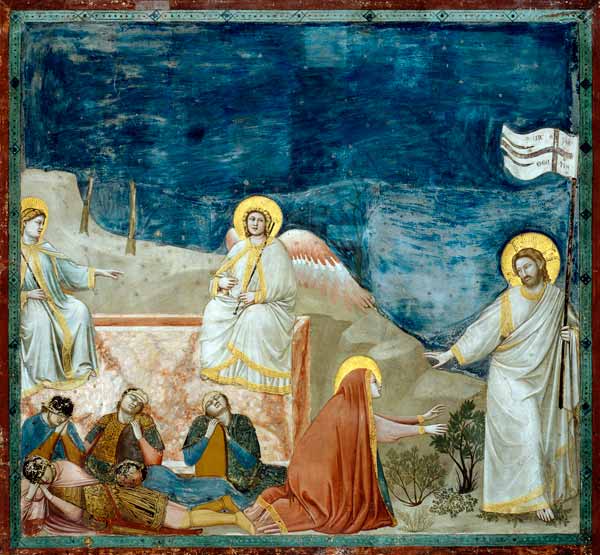
Giotto, Noli me tangere Artist Artist als Kunstdruck oder Gemälde.
Noli me tangere Depicts Mary Magdalene, woman, waist-length hair, Jesusand man Made from material fresco Genre religious art Location Scrovegni Chapel, Padua, Province of Padua, Veneto, Italy Creator Giotto Based on Noli me tangere Collection Scrovegni Chapel Inception 1303 (statement with Gregorian date earlier than 1584) Width 185 cm Height

. Noli me tangere. Fresco in Lower Basilica in Assisi . 13th century
Noli me tangere, by Giotto, 1303-1305, 14th century (fresco) Artist Giotto (Giotto di Bondone) (c.1266-1337) / Italian Photographer Antonio Quattrone Location Scrovegni (Arena) Chapel, Padua, Italy Medium fresco Date 1303 AD (C14th AD) Image description Detail.

Noli Me Tangere (detail), by Giotto Noli me tangere, Renaissance
Noli Me Tangere. 13th century Fresco Lower Basilica, Basilica of San Francesco Assisi, Italy Some scholars question the attribution to Giotto, which relies on the fresco's close similarity to his Noli Me Tangere in the Arena Chapel. The two are among the less common Noli me tangere images that include the two angels sitting inside the tomb.
Mary Magdalene and the Resurrected Christ ("Noli Me Tangere"), Giotto
Giotto is perhaps best known for the frescoes he painted in the Arena (or Scrovegni) Chapel. They were commissioned by a wealthy man named Enrico Scrovegni, the son of a well-known banker (and a banker himself). According to the Church, usury (charging interest for a loan) was a sin, and so perhaps one of Enrico's motivations for building the.

La résurrection (Noli me tangere), fresque de Giotto, chapelle des
Noli me tangere is a painting depicting a scene from the Resurrection (Noli me tangere) painted by Giotto between 1304-1306. The Fresco of Noli me tangere is located at Capella degli Scrovegni, Padua, Italy. Noli me tangere is part of the story in the Bible of the Resurrection of Christ where Jesus appears before the weeping Mary Magdalene at.

Noli me tangere. Museum Cappella degli Scrovegni, Padua. Autor Giotto
GIOTTO di Bondone. (b. 1267, Vespignano, d. 1337, Firenze) No. 37 Scenes from the Life of Christ: 21. Resurrection (Noli me tangere) 1304-06. Fresco, 200 x 185 cm. Cappella Scrovegni (Arena Chapel), Padua. Mary Magdalene recognizes Christ on Easter morning in front of the open tomb.

Noli Me Tangere Giotto Di Bondone the largest
Noli Me Tangere — Giotto's Masterpiece of the Early Fourteenth Century — By Richard Harries. Book The Passion in Art. Click here to navigate to parent product. Edition 1st Edition. First Published 2004. Imprint Routledge. Pages 4.

Noli me tangere Giotto Cappella degli Scrovegni Bruno Brunelli
Giotto di Bondone | Scenes from the Life of Christ, Resurrection (Noli me tangere) Giotto di Bondone | Scenes from the Life of Christ, Resurrection (Noli me tangere) The Cappella degli Scrovegni in Padua, Veneto, Italy (also known as the Arena Chapel) is regarded as one of the masterpieces of Western Art.
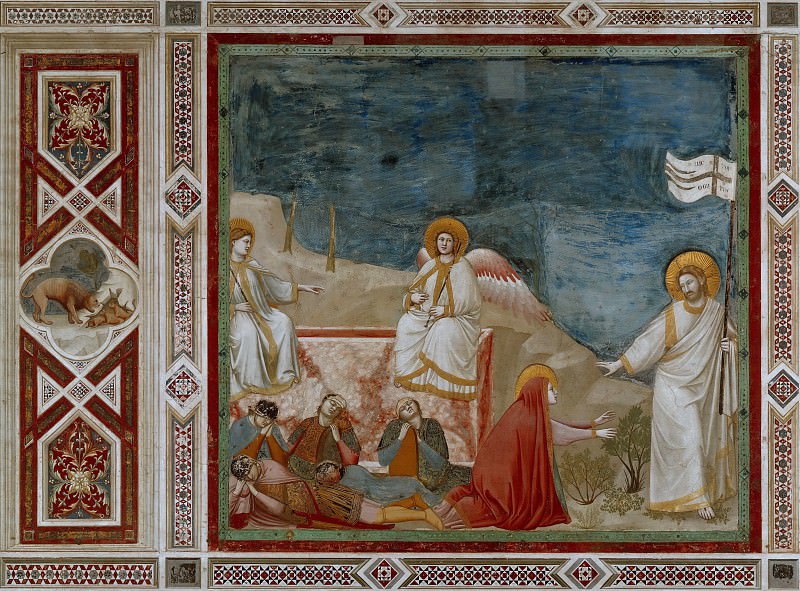
37. Resurrection (Noli me tangere) — Giotto di Bondone
The Scrovegni Chapel in Padua. The Scrovegni Chapel, dedicated to St. Mary of the Charity, frescoed between 1303 and 1305 by Giotto, upon the commission of Enrico degli Scrovegni, is one of the most important masterpieces of Western art. The frescoes, which narrate events in the lives of the Virgin Mary and Christ, cover the entire walls.

Noli me tangere, by Giotto, 13031305, 14th century (fresco)
The most famous works of art and paintings by Giotto di Bone are Noli me tangere, The Last Supper and his Madonna and Child. Giotto di Bondone Short Biography, facts and interesting information about Giotto the life of artist and famous historical character during the Middle Ages Middle Ages People Middle Ages Index Giotto di Bondone